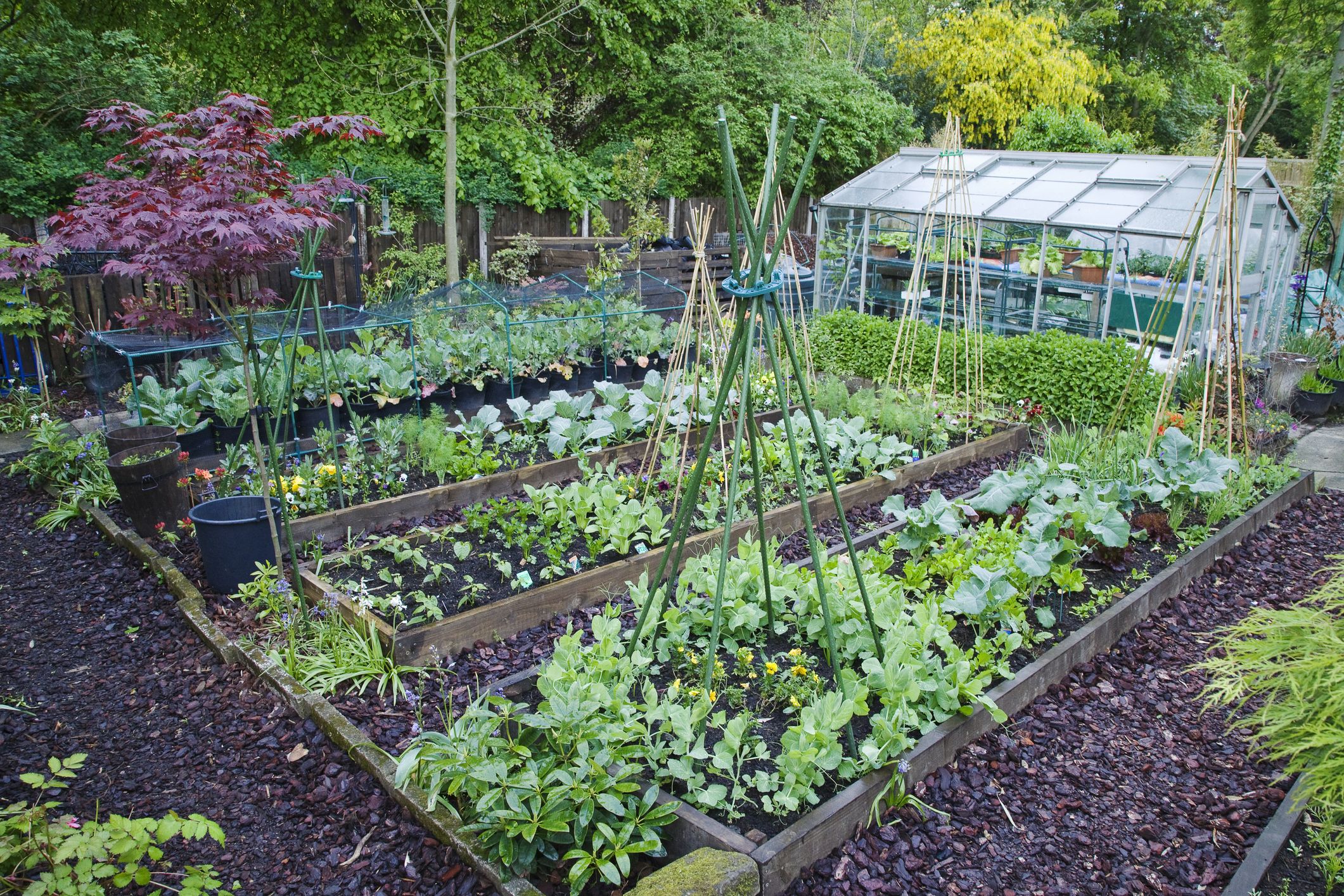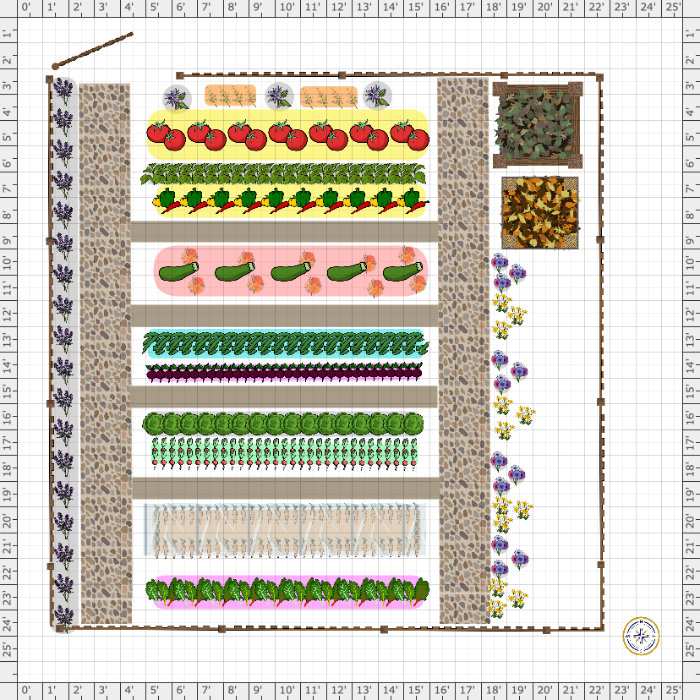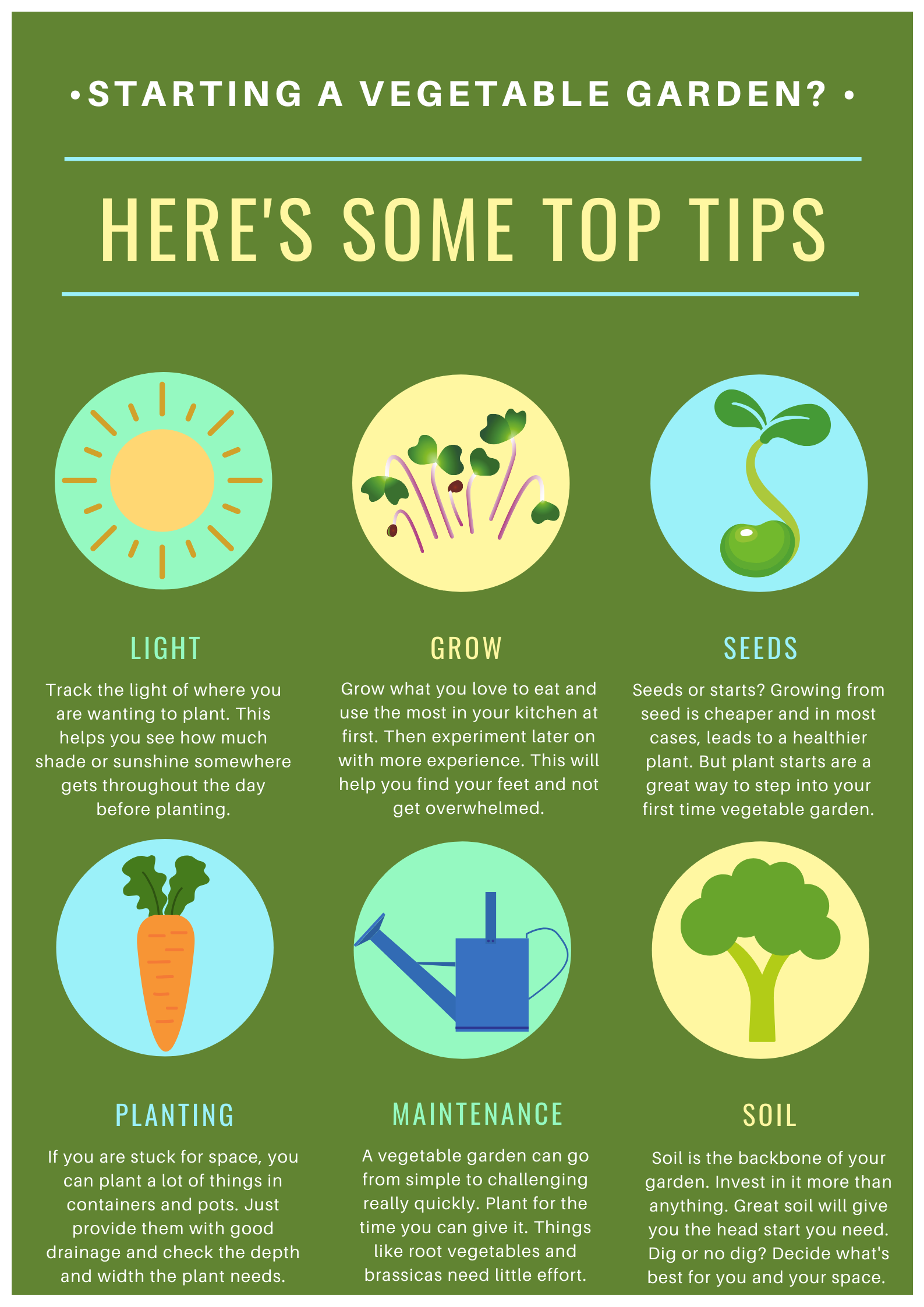Gardening vegetables can be incredibly rewarding. Fresh produce right from your backyard is unbeatable.
Whether you’re a seasoned gardener or a complete newbie, finding the best way to garden vegetables is crucial. It ensures a bountiful harvest and healthy plants. This guide will help you understand the essentials of vegetable gardening. From choosing the right location to soil preparation and plant care, every step matters.
The key is to start simple and learn as you go. With the right techniques, anyone can enjoy a thriving vegetable garden. So, let’s dive into the best practices and tips to make your gardening journey successful and enjoyable.

Credit: www.countryliving.com
Choosing The Right Location
Vegetables need at least six hours of sunlight each day. Full sun is best. Plants grow strong and healthy in bright light. Shade can make them weak. Choose a spot with no tall trees or buildings. This helps get enough light for your garden.
Good soil is rich in nutrients. It feels loose and drains well. Use compost to improve soil. Check the soil’s pH level. Most vegetables like a pH between 6 and 7. Avoid soil that is too sandy or too clay-like. Both can harm plant growth.

Credit: www.almanac.com
Preparing The Soil
First, check your soil’s pH. A simple test kit can help. Most vegetables grow best in soil with a pH of 6 to 7. Adjusting the pH can improve plant growth. Add lime to raise pH. Use sulfur to lower it. Regular testing ensures soil stays healthy.
Adding compost improves soil. It adds nutrients and helps retain water. Spread a layer of compost over your garden. Mix it into the soil with a shovel. Organic matter boosts plant growth. It also encourages beneficial soil organisms.
Selecting Vegetable Varieties
Choose vegetable varieties that match your climate. Warm-weather crops like tomatoes and peppers grow well in hot areas. Cool-weather crops like lettuce and peas prefer cooler temperatures. Always check the frost dates in your area before planting. This helps in avoiding damage to young plants. Heat-tolerant varieties are better for regions with extreme summer heat. Cold-tolerant varieties can survive light frosts. Growing the right vegetables ensures a healthy garden.
Heirloom vegetables are old varieties that have been passed down for generations. They have unique flavors and colors. Hybrid vegetables are a mix of two different plants. They are bred for disease resistance and higher yields. Heirlooms often need more care but offer more flavor. Hybrids are easier for beginners. Choose heirlooms for taste and heritage. Choose hybrids for easier care and better productivity.

Credit: www.youtube.com
Planting Techniques
Starting seeds indoors can give your plants a good start. Use small pots or trays. Fill them with seed starting mix. Plant seeds at the correct depth. Water gently and keep the soil moist. Place the pots in a warm spot with good light. Covering the pots with plastic wrap can help keep moisture in. Once seedlings appear, remove the plastic wrap.
Transplanting seedlings can be tricky. Choose a cloudy day or late afternoon. This helps reduce plant stress. Dig a hole that is big enough for the roots. Gently remove the seedling from its pot. Place the seedling in the hole and cover the roots with soil. Water the plant right after transplanting. Keep the soil moist for the first few days.
Watering Strategies
Using the right irrigation method helps plants grow well. Drip irrigation is effective. It sends water straight to the roots. This saves water and avoids wet leaves. Wet leaves can cause diseases. Sprinkler systems are another option. They cover larger areas. Sprinklers can waste water due to wind and evaporation. Soaker hoses are good for small gardens. They slowly release water along the hose. This method is simple and efficient.
Watering in the morning is best. It allows leaves to dry during the day. Wet leaves at night can lead to mold. Water deeply but not too often. This encourages deep roots. Shallow watering leads to weak roots. Check soil moisture before watering. Stick your finger into the soil. If it feels dry, water the plants.
Pest And Disease Control
Using natural remedies can help keep pests away. Garlic spray works well. Mix garlic with water and spray it. Another good choice is neem oil. It repels many insects. Soap and water spray can also help. It kills soft-bodied insects. These remedies are safe for your plants.
Keep your garden clean. Remove dead leaves and plants. They attract pests. Rotate your crops each year. This stops pests from building up in the soil. Use row covers to protect plants. They act as a barrier. Water your plants in the morning. Wet leaves overnight can cause disease.
Fertilization Practices
Healthy soil boosts vegetable growth. Adding compost and organic fertilizers enriches the garden. Regular watering maintains nutrient balance.
Types Of Fertilizers
There are many types of fertilizers. Organic fertilizers include compost and manure. They are natural and safe. Chemical fertilizers are faster. They include nitrogen, phosphorus, and potassium. Each type helps plants grow. Organic fertilizers improve soil health. Chemical ones give quick results. Choose the right type for your garden.
Application Timing
Fertilizers should be applied at the right time. Early spring is good for most vegetables. This helps plants grow strong. Apply again in mid-season. This keeps plants healthy. Do not apply too late. Late fertilization can harm plants. Always read the instructions. Follow them carefully for best results.
Harvesting Tips
Look for bright colors on your vegetables. A firm feel is also a good sign. Tomatoes should be a deep red. Cucumbers are best when they are dark green. Peppers will change color when ripe. Carrots should be vibrant orange. Beans should snap easily. Squash should be firm and heavy.
Use clean tools to avoid plant disease. Cut vegetables instead of pulling them. This keeps plants healthy. Handle vegetables gently. Harvest in the morning for best flavor. Store vegetables in a cool place. Rinse vegetables before storing them. Label your harvest with dates.
Frequently Asked Questions
What Is The Best Soil For Vegetable Gardening?
The best soil for vegetable gardening is loamy soil. It provides good drainage, retains moisture, and is rich in organic matter. Adding compost can enhance soil quality.
How Often Should You Water Vegetable Plants?
Water vegetable plants thoroughly at least once a week. In hot weather, increase frequency to keep the soil moist. Avoid overwatering to prevent root rot.
What Vegetables Are Easiest To Grow?
Easy vegetables to grow include tomatoes, lettuce, radishes, and carrots. These vegetables require minimal care and grow quickly, making them ideal for beginners.
When Is The Best Time To Plant Vegetables?
The best time to plant vegetables is in spring. This is when the soil has warmed up. However, some vegetables can be planted in late summer for a fall harvest.
Conclusion
Growing vegetables can be fun and rewarding. Use good soil and proper tools. Water plants regularly and give them sunlight. Choose vegetables that grow well in your climate. Pest control is crucial for healthy plants. Start small and expand as you learn.
Enjoy the process and fresh produce. Gardening brings joy and fresh food to your table. Happy gardening!

My mission is to help you bring the beauty of nature indoors with expert advice, detailed plant care guides, and creative design ideas.





Leave a Reply